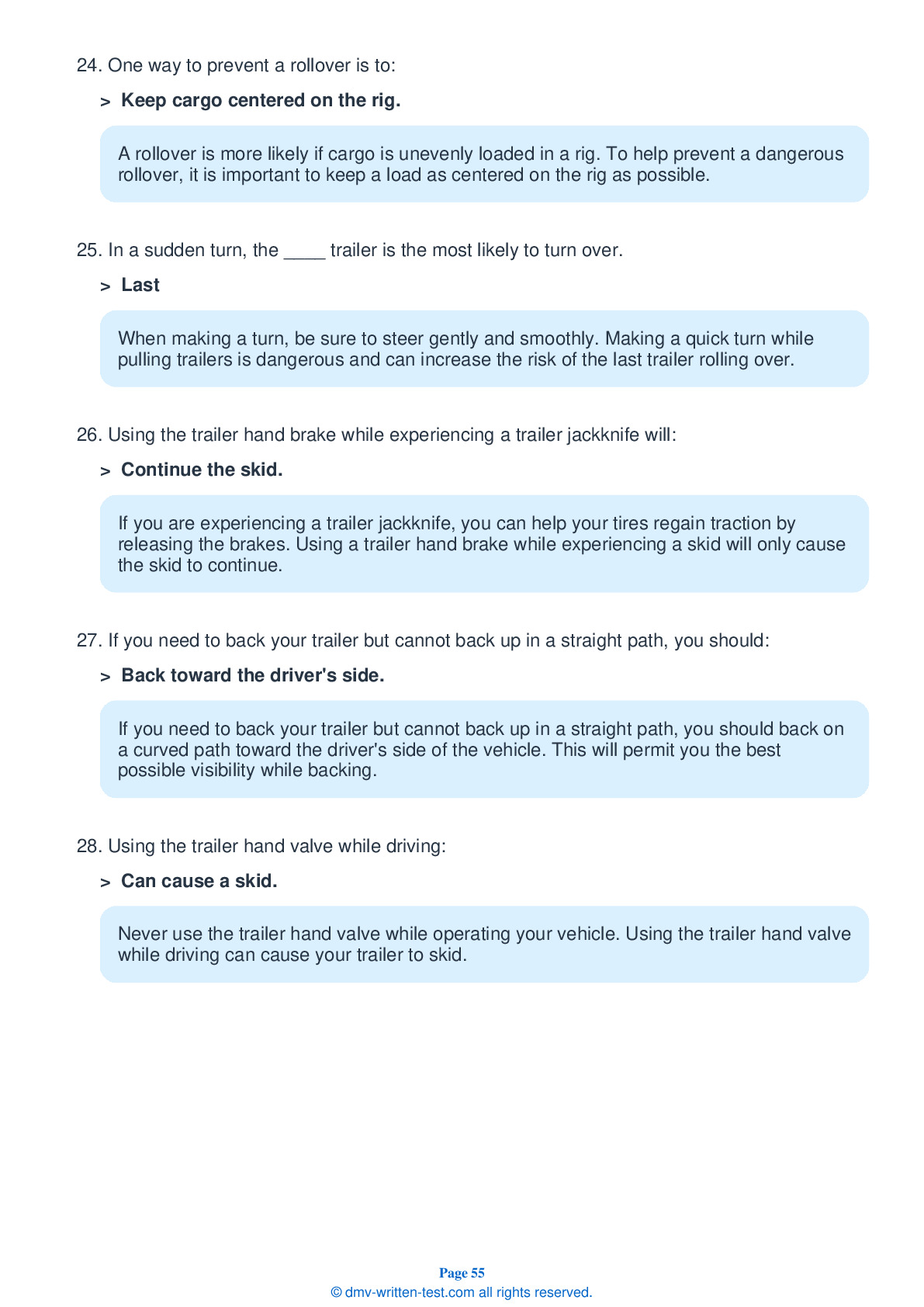Air Brakes
This endorsement is required for driving a vehicle with air brakes. To receive this endorsement, applicants must pass a written test. The test consists of 25 multiple choice questions. Each question has two, three or four answer choices. To pass, the applicant must answer at least 20 questions correctly. Test questions come from the Utah Commercial Driver License Handbook. Questions come from the chapter covering: Air Brakes. The Air Brakes endorsement may be used with the Class A, B or C CDL.
Number of Question
Passing Score
19. Do not operate a vehicle if any brake drums have cracks that are larger than ____ of the width of the friction area.
Explanation
Before beginning a trip, it is important to check the brake drums during your walk-around inspection. It is unsafe to drive if any brake drum has a crack more than one half of the width of the friction area.
20. An Anti-Lock Braking System (ABS):
Explanation
Anti-Lock Braking Systems (ABS) are compatible with air brakes and help a driver maintain control of their vehicle by preventing wheel lockup.
21. On trucks and buses, where are ABS malfunction lamps located?
Explanation
Tractors, trucks, and buses with Anti-Lock Braking Systems (ABS) have yellow malfunction lamps located on their instrument panels. Trailers have yellow ABS malfunction lamps on their left side, either on the front or rear corner.
22. In a newer vehicle, you apply the parking brake:
Explanation
In a newer vehicle with air brakes, the parking brake is controlled by a diamond-shaped yellow knob. The knob is pulled out to apply the parking brakes and pushed in to release them.
23. To use the controlled braking method, you should:
Explanation
The method of controlled braking involves applying the brakes as hard as you can without locking the wheels. If you need to make large steering adjustments while using controlled braking, you should remove your foot from the brake pedal, steer, then reapply the brakes.
24. Air tank drains:
Explanation
In an air brake system, the air storage tanks are equipped with drains to allow water and compressor oil to be removed. The water and oil can damage the brakes if left to accumulate in the system.
25. Why do large vehicles use air brakes?
Explanation




